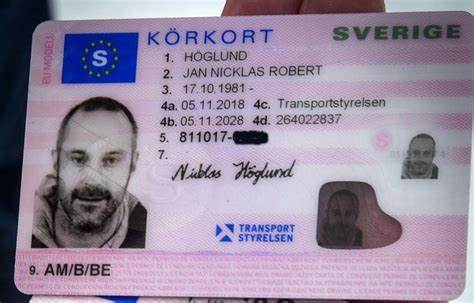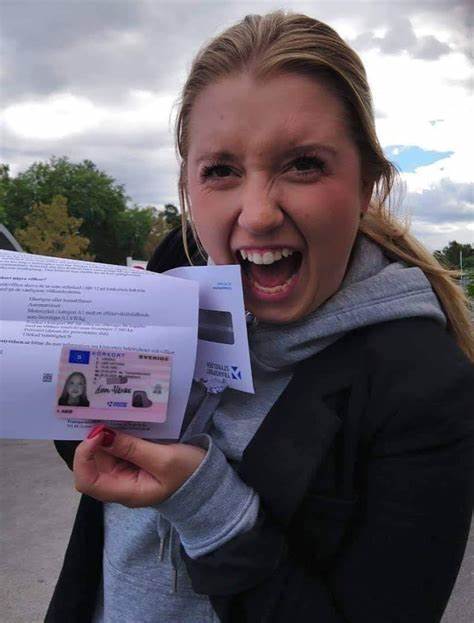7 Practical Tips For Making The Most Out Of Your Buy Driving License
본문
The Comprehensive Guide to Legally Obtaining a Driving License
Driving is an essential ability for lots of, providing the liberty to travel where and when you want, frequently making life more practical and enjoyable. Nevertheless, obtaining a driving license is a process that requires understanding, patience, and adherence to legal procedures. This guide aims to offer a comprehensive introduction of the steps one must follow to legally acquire a driving license, highlighting essential considerations and frequently asked concerns to guarantee a smooth and hassle-free experience.
Understanding the Basics
Before diving into the application procedure, it's essential to comprehend the basic requirements and kinds of driving licenses available. Driving laws differ substantially from nation to country, and even within various states or provinces within the exact same nation. Typically, there are numerous types of driving licenses, consisting of:

- Learner's Permit: This is often the initial step while doing so, allowing new chauffeurs to gain experience under supervision.
- Provisionary License: Issued after passing a basic driving test, this license typically includes constraints and is a stepping stone to a complete license.
- Complete Driver's License: Once all the required requirements are satisfied, motorists can get a full license, which uses total driving opportunities.
- Commercial Driver's License (CDL): Required for those who wish to run business lorries, such as trucks or buses.
Steps to Obtain a Driving License
1. Research Study Local Driving Laws
The first action in getting a driving license is to investigate the specific requirements in your area. Check out the official website of your local Department of Motor Vehicles (DMV) or equivalent company to find comprehensive information about the licensing process, consisting of age limitations, required documents, and fees.
2. Prepare Required Documentation
Each jurisdiction has its own set of files that should be submitted to obtain a driving license. Typically required documents consist of:
- Proof of Identity: A passport, birth certificate, or state-issued ID.
- Proof of Residency: Utility costs, lease arrangements, or other official files that validate your address.
- Social Security Number (if relevant): In some countries, a social security number or equivalent is needed for recognition.
- Vision Test Results: Some locations require a vision test before issuing a learner's license or license.
3. Take a Driver's Education Course
Lots of states and nations need new drivers to finish a driver's education course. These courses are developed to teach the guidelines of the roadway, traffic laws, and safe driving practices. They can be completed äKta KöRkort Online or in a classroom setting and often include both theoretical and useful elements.
4. Get a Learner's Permit
Once the needed documentation is prepared and the driver's education course is completed, the next action is to apply for a student's license. This generally involves going to the DMV or sending an application online. You will likewise require to pass a written test that covers traffic laws and driving understanding.
5. Practice Driving
With a student's authorization, you can start practicing driving under the supervision of a certified grownup. This is a crucial action in developing your self-confidence and skills behind the wheel. It's likewise important to acquire experience in different driving conditions, such as night driving, highway driving, and driving in harsh weather.
6. Arrange and Pass the Driving Test
After acquiring adequate driving experience, you can arrange a driving test with the DMV. The test will evaluate your capability to safely operate a vehicle and follow traffic laws. You will need to bring a properly signed up and insured vehicle to the test, and the examiner will assess your driving abilities on a predetermined route.
7. Apply for a Provisional License
If you pass the driving test, you will generally get a provisionary license. This license may include constraints, such as a curfew or a limit on the number of guests you can have in the car. These limitations are created to lower the threat of accidents and assist new drivers accustom to the roadway.
8. Upgrade to a Full License
When you have held a provisionary license for the required duration and satisfied any extra requirements, you can update to a full driver's license. This process typically involves an easy application and may require a retest or extra paperwork.
Tips for a Successful Application
- Start Early: Begin the process as quickly as you meet the age requirement to provide yourself sufficient time to prepare.
- Stay Informed: Keep current with any modifications in driving laws or DMV treatments.
- Practice Regularly: Consistent practice is essential to building confidence and improving your driving abilities.
- Stay Calm During the Test: Anxiety can affect your efficiency, so take deep breaths and remain focused.
- Follow DMV Instructions: Pay attention to the guidelines offered by the DMV and the inspector throughout your test.
Frequently Asked Questions (FAQs)
Q: What is the minimum age to make an application for a student's permit?
A: The minimum age differs by jurisdiction. In the United States, it normally ranges from 15 to 16 years old. In the UK, the minimum age is 17. Check your regional DMV site for particular information.
Q: Can I make an application for a driver's license online?
A: Some jurisdictions allow you to finish parts of the application process online, such as filling out types and scheduling tests. However, you will usually need to go to a DMV workplace in person to send required files and take the driving test.
Q: What happens if I fail the driving test?
A: If you stop working the driving test, you can generally retake it after a particular period. This period varies by location, but it is frequently a few weeks. It's a great idea to practice more before retaking the test to improve your opportunities of success.
Q: Can I drive alone with a learner's permit?
A: No, a student's license generally requires you to be accompanied by a licensed grownup, generally over 21 years old, who is seated in the front guest seat.
Q: Is a vision test required to get a driving license?
A: Yes, most jurisdictions require a vision test to make sure that you can securely run an automobile. You can generally take this test at the DMV or with an approved eye doctor.
Q: How long does it take to get a full driver's license?
A: The time required to obtain a complete driver's license varies depending on your jurisdiction and the particular steps involved. Generally, it can take numerous months, consisting of the time needed to finish a driver's education course, hold a student's permit, and pass the driving test.
Q: Can I utilize a provisional license to drive for work?
A: It depends upon the restrictions put on your provisionary license. Some provisional licenses enable you to drive for work, while others might have particular limitations. Check your license for information or call the DMV for explanation.
Q: What is the difference between a learner's authorization and a provisionary license?
A: A learner's authorization is the very first stage of the licensing process and enables you to drive only under supervision. A provisionary license, on the other hand, grants you more driving advantages but might still have some restrictions, such as a curfew or traveler limits.
Q: Can I look for a commercial driver's license (CDL) without a complete driver's license?
A: No, you generally require a full driver's license before requesting a CDL. A CDL is a specialized license that needs additional training and testing, and it is just released to those who have demonstrated the capability to securely run a basic automobile.

Q: What should I do if I lose my driving license?
A: If you lose your driving license, you need to report it to the DMV and request a replacement. You might need to supply evidence of identity and pay a fee. It's also a great concept to notify your insurance company and any other relevant celebrations.
Getting a driving license is a significant turning point that opens new opportunities and increases independence. By following the steps described in this guide and remaining informed about local laws and requirements, you can guarantee a smoother and more successful licensing procedure. Keep in mind that driving is a serious duty, and taking the time to find out and practice is necessary for your safety and the security of others on the road.

댓글목록0
댓글 포인트 안내